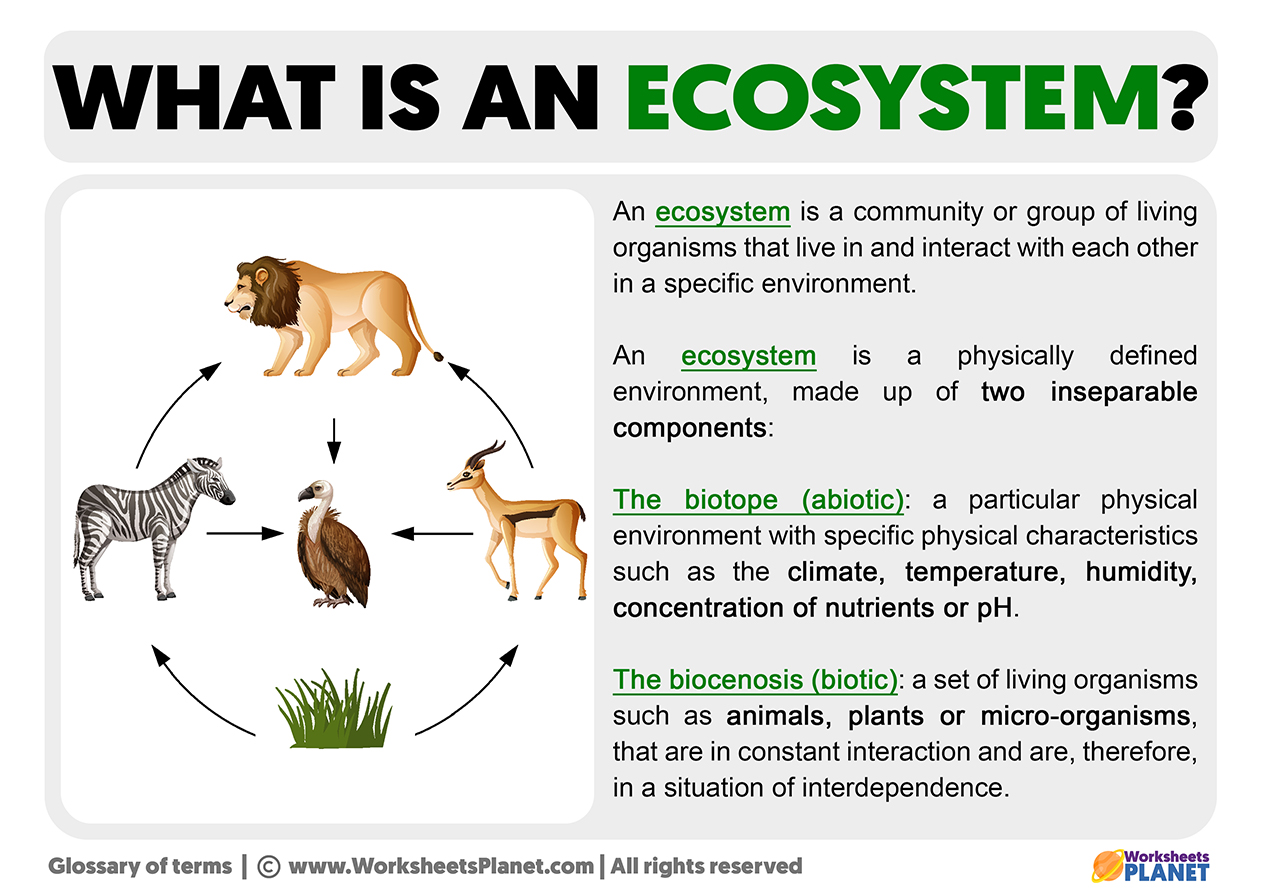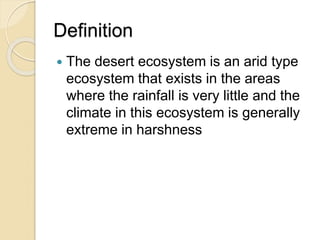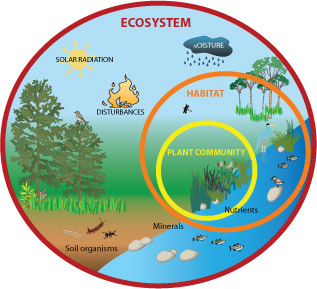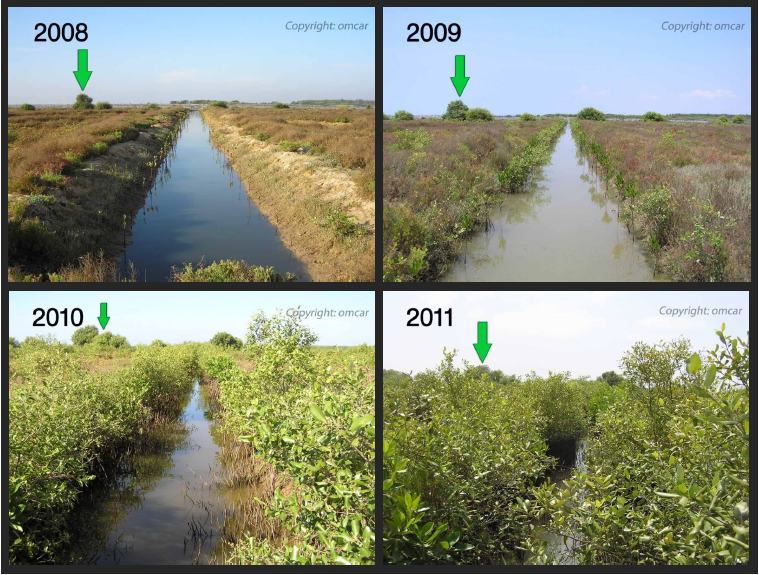Topic define ecosystem resilience: Discover the remarkable ability of ecosystems to withstand and recover from disruptions, ensuring the sustainability of our natural world.
Table of Content
- What is the capacity of an ecosystem to maintain its normal patterns of nutrient cycling and biomass production after experiencing disruptions known as?
- Understanding Ecosystem Resilience
- Factors Influencing Ecosystem Resilience
- Role of Biodiversity in Resilience
- Resilience to Climate Change
- Assessing and Measuring Resilience
- Strategies for Enhancing Resilience
- YOUTUBE: Resilience
- Case Studies of Resilient Ecosystems
- Challenges in Maintaining Ecosystem Resilience
- Future Research Directions in Ecosystem Resilience
What is the capacity of an ecosystem to maintain its normal patterns of nutrient cycling and biomass production after experiencing disruptions known as?
An ecosystem\'s capacity to maintain its normal patterns of nutrient cycling and biomass production after experiencing disruptions is known as ecological resilience. This concept, as defined by Holling in 1973, refers to the ability of an ecosystem to absorb changes and disturbances while still retaining its basic structure and functions.
- Ecological resilience is a measure of the amount of disruption required to transform a system.
- It involves the system\'s ability to adapt and recover from disturbances.
- This resilience is crucial for the long-term sustainability of ecosystems and the services they provide to the environment and society.
READ MORE:
Understanding Ecosystem Resilience
Ecosystem resilience refers to the capacity of an ecosystem to absorb disturbances, adapt to changes, and rapidly recover to its original state or evolve into a new, sustainable configuration. This intrinsic ability ensures the continuity and functionality of ecosystems, even in the face of environmental stressors and changes.
- Key Components: The resilience of an ecosystem is determined by its biodiversity, the interconnectivity between species, and the health of its foundational elements like soil, water, and air.
- Adaptation and Recovery: Resilient ecosystems are characterized by their ability to undergo stress and disturbances, adapt to new conditions, and recover without losing their essential functions and processes.
- Thresholds and Tipping Points: Understanding the thresholds beyond which an ecosystem may not recover is crucial for maintaining ecosystem resilience. Once these tipping points are crossed, ecosystems can shift to a different state, often with reduced biodiversity and functionality.
- Human Impact: Human activities, both negative and positive, play a significant role in shaping ecosystem resilience. Sustainable practices and conservation efforts can enhance resilience, while pollution, deforestation, and overexploitation can diminish it.
Grasping the concept of ecosystem resilience is fundamental for developing strategies to protect and sustain the natural environment, ensuring it can continue to support life and provide essential services to humanity.

Factors Influencing Ecosystem Resilience
The resilience of ecosystems is not static but influenced by various internal and external factors that interact in complex ways. Understanding these factors is crucial for managing and protecting ecosystems effectively.
- Biodiversity: Higher biodiversity tends to enhance resilience, as a variety of species can fulfill ecosystem functions and services even when some are compromised.
- Connectivity: The physical and biological connections within and between ecosystems facilitate recovery processes and species migration, enhancing resilience.
- Climate Variability: Ecosystems adapted to frequent natural disturbances like fires or floods are often more resilient, but extreme climate events can test these limits.
- Landscape and Topography: The physical structure and layout of an ecosystem, including its size and shape, can influence its capacity to recover from disturbances.
- Genetic Diversity: Populations with higher genetic diversity have a greater capacity to adapt to changing environmental conditions, contributing to ecosystem resilience.
- Human Activities: Sustainable land use, pollution control, and conservation efforts can support resilience, while habitat destruction and resource overexploitation can undermine it.
- External Stresses: The frequency, intensity, and type of external stresses, such as pollution or invasive species, can significantly impact resilience.
By recognizing and addressing these factors, we can take steps to bolster the resilience of ecosystems, ensuring their health and sustainability for future generations.
Role of Biodiversity in Resilience
Biodiversity is a cornerstone of ecosystem resilience, providing the variability and redundancy necessary for ecosystems to respond to environmental changes and disturbances. The intricate relationships between species and their roles in ecosystems are fundamental to maintaining balance and ensuring recovery after disturbances.
- Variety of Species: A rich tapestry of species ensures that some can perform essential ecosystem functions if others are compromised, thereby supporting overall ecosystem stability.
- Genetic Diversity: Within-species genetic diversity equips populations with the adaptability to withstand environmental changes and resist diseases, enhancing ecosystem resilience.
- Functional Redundancy: Multiple species with similar roles (functional redundancy) can safeguard ecosystem functions even when one species is affected, promoting quicker recovery.
- Ecosystem Services: Biodiverse ecosystems provide a broader range of services, such as pollination, water purification, and carbon sequestration, which are critical for resilience.
- Adaptive Capacity: Diverse ecosystems have a greater capacity to adapt to changes, ensuring that they can maintain their functions and services under different scenarios.
The role of biodiversity in resilience underscores the importance of conservation efforts focused on protecting habitats, restoring degraded areas, and maintaining the natural diversity of life on Earth.

Resilience to Climate Change
Climate change poses significant challenges to ecosystems worldwide, altering temperature patterns, precipitation, and extreme weather events. Ecosystem resilience to climate change is crucial for maintaining biodiversity, ecosystem services, and the livelihoods that depend on them.
- Adaptive Strategies: Ecosystems with high resilience can adapt to changing climate conditions through shifts in species composition, migration patterns, and altered ecosystem functions.
- Carbon Sequestration: Resilient forests, wetlands, and ocean ecosystems play a vital role in carbon sequestration, mitigating the impacts of climate change.
- Buffering Extremes: Healthy ecosystems can buffer the impacts of extreme weather events like storms, floods, and droughts, protecting communities and biodiversity.
- Conservation and Restoration: Protecting and restoring ecosystems, such as mangroves and coral reefs, enhances their resilience and their ability to withstand climate-related stresses.
- Integrated Management: Cross-sectoral and integrated management approaches that consider climate change predictions are essential for enhancing ecosystem resilience.
Building resilience to climate change involves understanding and acting on the complex interplay between climate factors and ecosystem dynamics to ensure the sustainability of ecosystems and the services they provide.
Assessing and Measuring Resilience
Assessing and measuring the resilience of ecosystems is a complex task that requires a multifaceted approach, considering various ecological indicators and the dynamic interactions within ecosystems. This process is vital for informed management and conservation strategies.
- Indicator Species: Monitoring the health and population trends of species sensitive to environmental changes can provide early warning signs of ecosystem stress.
- Ecosystem Functions: Evaluating key ecosystem functions, such as nutrient cycling, soil fertility, and primary productivity, helps assess the system"s ability to maintain its processes.
- Resilience Models: Computational models that simulate ecosystem dynamics under different scenarios can predict resilience and identify potential tipping points.
- Genetic Diversity: Assessing the genetic diversity within populations can indicate their potential for adaptation to changing environmental conditions.
- Connectivity: Analyzing landscape connectivity helps understand the ability of species to move and adapt to habitat changes, contributing to overall ecosystem resilience.
- Stress and Disturbance Histories: Historical data on past disturbances and recovery patterns provide insights into the ecosystem"s resilience over time.
Effective assessment of ecosystem resilience requires interdisciplinary research and collaboration, integrating ecological, genetic, and climatic data to develop a comprehensive understanding of ecosystem health and sustainability.

Strategies for Enhancing Resilience
Enhancing the resilience of ecosystems is essential for their preservation and the well-being of the planet. Implementing targeted strategies can help ecosystems withstand and recover from disturbances, ensuring their health and sustainability for future generations.
- Conservation of Biodiversity: Protecting and restoring diverse species and habitats is crucial for maintaining ecosystem functions and services.
- Sustainable Resource Management: Implementing sustainable practices in agriculture, forestry, and fisheries reduces stress on ecosystems, helping to maintain their balance.
- Restoration Projects: Actively restoring degraded ecosystems, such as wetlands, forests, and coral reefs, can rebuild resilience and functionality.
- Climate Change Mitigation: Reducing greenhouse gas emissions and promoting carbon sequestration efforts are vital for minimizing climate impacts on ecosystems.
- Integrated Landscape Management: Coordinating land use and conservation efforts across landscapes helps maintain ecological processes and connectivity.
- Community Involvement: Engaging local communities in conservation and restoration initiatives fosters stewardship and leverages traditional knowledge.
- Policy and Regulation: Developing and enforcing policies that protect critical habitats and regulate resource use are key to sustaining ecosystem resilience.
- Research and Monitoring: Ongoing research and monitoring are necessary to understand ecosystem dynamics, inform management decisions, and adapt strategies as conditions change.
Through these strategies, we can strengthen the resilience of ecosystems, enabling them to adapt to challenges and continue providing vital services to all life on Earth.
Resilience
Adaptive: Explore the fascinating world of adaptive technology in this video that showcases innovative solutions designed to improve people\'s lives. Witness the incredible ways in which adaptability can lead to greater independence and inclusion. Stability: Delve into the importance of stability in this captivating video that highlights the key role it plays in various aspects of our lives. Discover how building a strong foundation of stability can lead to success and resilience.
Dynamic Resilient Ecosystems
Topic 5 Lesson 2, 7th Grade Science Touches on both types of succession and pioneer species!
Case Studies of Resilient Ecosystems
Examining resilient ecosystems across the globe offers valuable insights into the natural world"s adaptability and the effectiveness of conservation efforts. These case studies highlight the principles of resilience in action and the positive outcomes of targeted environmental management.
- The Coral Reefs of the Great Barrier Reef: Despite facing significant threats from climate change and bleaching events, parts of the Great Barrier Reef have shown remarkable recovery due to conservation efforts and natural resilience factors.
- Amazon Rainforest: Known as the "lungs of the Earth," the Amazon demonstrates resilience through its vast biodiversity and complex ecological processes, which help it recover from disturbances like deforestation and fires.
- Serengeti Ecosystem: The Serengeti in East Africa, with its diverse fauna and extensive grasslands, maintains its resilience through natural processes like migration and fire, supported by conservation policies.
- Mangroves of Sundarbans: The Sundarbans mangrove forest, despite facing cyclones and rising sea levels, showcases resilience through its natural protective barriers and biodiversity, offering lessons in coastal ecosystem management.
- Yellowstone National Park: After the reintroduction of wolves, Yellowstone"s ecosystem demonstrated resilience by re-establishing balance among species and revitalizing its landscapes, illustrating the importance of keystone species.
These examples underscore the importance of understanding and supporting ecosystem resilience, showcasing how diverse ecosystems can recover from and adapt to environmental changes, ensuring their sustainability for future generations.
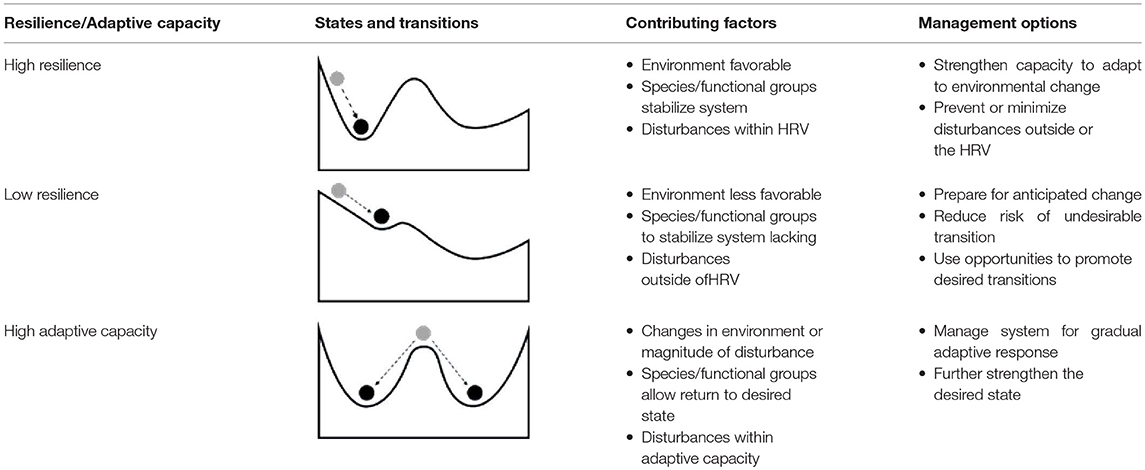
Challenges in Maintaining Ecosystem Resilience
Maintaining the resilience of ecosystems in the face of escalating environmental pressures presents numerous challenges. Addressing these issues is critical for the health and sustainability of our planet"s natural systems.
- Climate Change: Rising temperatures, shifting weather patterns, and increased frequency of extreme weather events strain ecosystems, pushing them beyond their adaptive capacities.
- Habitat Fragmentation: Urbanization, agriculture, and infrastructure development break up natural habitats, reducing connectivity and the ability of species to migrate and adapt.
- Invasive Species: Non-native species can outcompete native flora and fauna, disrupting established ecological relationships and diminishing biodiversity.
- Pollution: Air, water, and soil pollution from industrial, agricultural, and urban sources degrade ecosystem health and function, reducing resilience.
- Overexploitation of Resources: Unsustainable logging, fishing, and mining practices deplete natural resources, leading to loss of biodiversity and ecosystem services.
- Lack of Awareness and Involvement: Insufficient understanding of the importance of ecosystems and limited public engagement in conservation efforts hinder resilience-building initiatives.
- Policy and Governance Challenges: Inadequate or poorly enforced environmental regulations, along with conflicting policy priorities, can undermine efforts to maintain ecosystem resilience.
Overcoming these challenges requires a concerted global effort, incorporating scientific research, community engagement, sustainable management practices, and strong policy frameworks to support ecosystem resilience into the future.
READ MORE:
Future Research Directions in Ecosystem Resilience
As the need to understand and enhance ecosystem resilience becomes increasingly critical in the face of global environmental challenges, future research in this field is poised to explore new frontiers. These research directions will inform more effective conservation and restoration strategies.
- Integrated Socio-Ecological Systems: Investigating the complex interactions between human societies and ecosystems to develop sustainable management practices that enhance resilience.
- Climate Resilience Modeling: Advancing predictive models to assess how ecosystems respond to various climate change scenarios, focusing on adaptation and mitigation strategies.
- Genetic and Species Resilience: Exploring the genetic basis of resilience in species and populations to understand their adaptive capacities to environmental changes.
- Technological Innovations in Monitoring: Utilizing remote sensing, AI, and other technological advancements for real-time monitoring and assessment of ecosystem health and resilience.
- Restoration Ecology: Developing and testing new restoration techniques that prioritize resilience, including rewilding and assisted migration.
- Policy and Governance Research: Examining the effectiveness of policies and governance structures in supporting ecosystem resilience and identifying areas for improvement.
- Transdisciplinary Approaches: Fostering collaboration across disciplines to address the multifaceted nature of ecosystem resilience, incorporating insights from ecology, sociology, economics, and more.
These future research endeavors will play a pivotal role in enhancing our understanding of ecosystem resilience, guiding actions to safeguard and sustain the natural world for future generations.
Understanding ecosystem resilience illuminates the path to sustainable coexistence, inspiring actions that nurture and fortify the natural world for the prosperity of all life on Earth.




